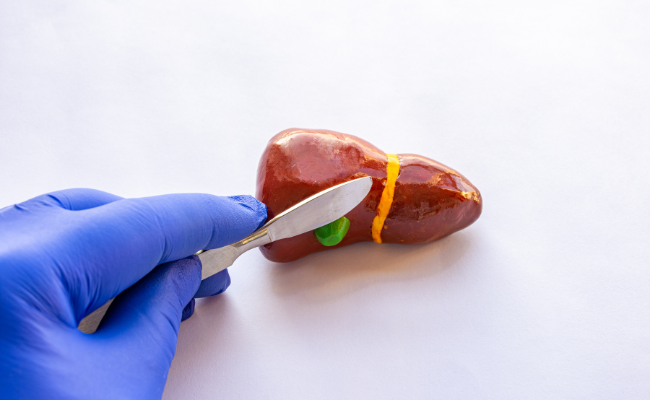Know about Gall Bladder Removal
- November 14, 2023
- No Comments

What is Gallbladder Removal?
Gallbladder removal, or cholecystectomy, is a surgical procedure intended to address issues associated with the gallbladder, a small organ situated beneath the liver. Responsible for storing bile, a digestive fluid produced by the liver, the gallbladder aids in breaking down fats during digestion. Even though the gallbladder contributes to the digestive process, its removal does not impede normal digestion; instead, bile is directed straight from the liver to the small intestine. Executed through a single substantial incision in the abdomen, this procedure removes the gallbladder, the organ crucial for storing excess bile produced by the liver.
Why Gallbladder Removal is Necessary?
The primary indication for gallbladder removal arises from the formation of gallstones within the gallbladder. Gallstones are solid particles that can range in size and composition, forming when there is an imbalance in the substances that make up bile, such as cholesterol and bilirubin. These stones can cause various complications, leading to the need for surgical intervention.
Gallstones can trigger symptoms such as abdominal pain, especially after meals high in fat, nausea, vomiting, and inflammation of the gallbladder (cholecystitis). Left untreated, gallstones can lead to more severe complications, including blockage of the bile ducts, pancreatitis, or infections in the gallbladder.
How is Gallbladder Removal Performed?
There are two primary methods for gallbladder removal: laparoscopic cholecystectomy and open cholecystectomy.
- Laparoscopic Cholecystectomy: This approach, considered minimally invasive, is the most widely used. The surgeon creates multiple small incisions in the abdomen. Through one of these incisions, a laparoscope—a slender tube equipped with a camera—is introduced, enabling the surgeon to observe the procedure on a monitor. Utilizing specialized tools, the gallbladder is meticulously removed through one of these small incisions.
- Open Cholecystectomy: In specific scenarios, an open surgical approach may be deemed necessary. This entails a larger incision in the abdomen, affording the surgeon a direct view of the gallbladder. Open cholecystectomy is typically reserved for situations where laparoscopic removal is considered impractical or when complications are anticipated.
Treatment Solution:
Following gallbladder removal, patients may undergo various treatments and care measures to ensure a smooth recovery:
- Medications: Pain relievers are often prescribed to manage post-surgical discomfort.Antibiotics may be administered if there is any indication of infection.
- Lifestyle Changes: Dietary adjustments are crucial after gallbladder removal. Patients are often advised to reduce their intake of fatty foods to accommodate the absence of the gallbladder.A gradual return to regular activities is recommended, with patients resuming normal daily tasks at a pace that aligns with their recovery.
- Postoperative Care: Follow-up appointments with the surgeon are essential for monitoring recovery progress and addressing any concerns that may arise.Wound care instructions are provided to ensure proper healing and reduce the risk of infection.
- Potential Adjustments: In some cases, patients may be prescribed bile acid supplements to aid in digestion, compensating for the gallbladder's absence.
Benefits of Gallbladder Removal:
- Resolution of Symptoms: Gallbladder removal provides relief from the pain and discomfort associated with gallstones.It effectively prevents complications such as inflammation of the gallbladder, bile duct blockages, and related infections.
- Improved Digestive Health: While the gallbladder is involved in fat digestion, the body adapts to its absence, allowing most individuals to resume a normal diet after recovery.
- Minimally Invasive Option: Laparoscopic cholecystectomy, being minimally invasive, results in smaller incisions, less postoperative pain, and a shorter recovery period compared to open surgery.
- Lower Risk of Recurrence: Once the gallbladder is removed, the likelihood of gallstone recurrence is significantly diminished.
- Enhanced Quality of Life: Individuals who have struggled with chronic symptoms related to gallstones often experience a substantial improvement in overall well-being and quality of life after gallbladder removal.
Comments (0)